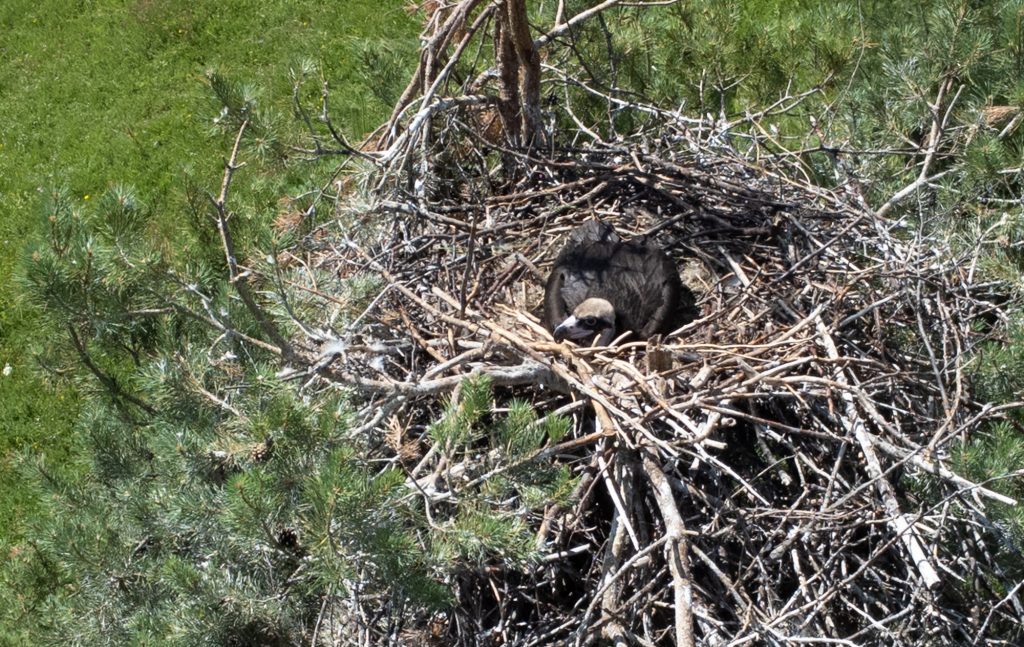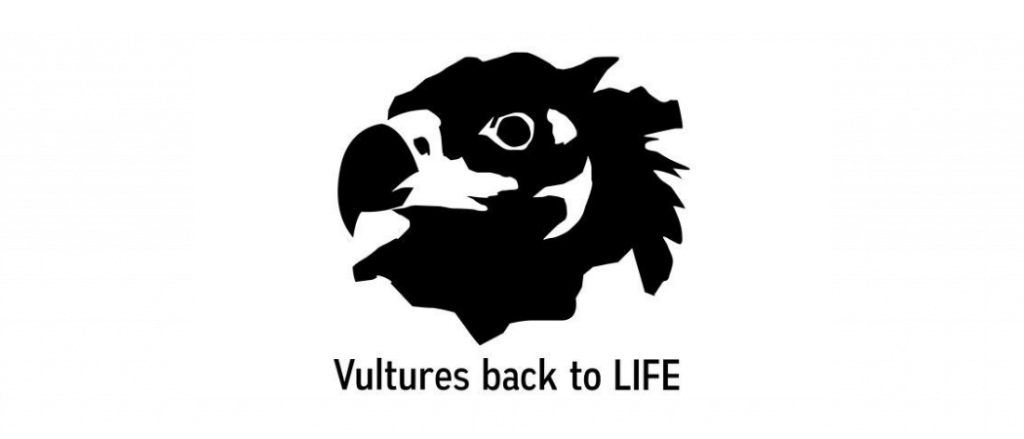
This year, Bulgaria welcomed the second Cinereous Vulture chick in the wild, this time in the Western Balkan Mountains. This event consolidated the comeback of the Cinereous Vulture in the country, a milestone that became a reality last year thanks to extensive reintroduction efforts. To reinforce these efforts, the Vultures Back to LIFE project extensively monitors Cinereous Vultures in the wild, and this chick is no different. A project team tagged the nestling at the end of June to follow her movements in the wild after fledging to gain important insight into the life of the young vulture, which will help inform accurate conservation actions.
Tagging the Cinereous Vulture in the nest
Meet the Cinereous Vulture Ponora, a young female chick successfully bred by a nesting pair in the Western Balkan Mountains – the first of her species to hatch in this region in more than 60-70 years and the second in Bulgaria in nearly three decades. On the 90th day of her hatching, about a month before Ponora was expected to leave the nest, a Vultures Back to LIFE team led by our partners at the Fund for Wild Flora and Fauna (FWFF) marked her with metal and coloured rings and a GPS transmitter. Georgi Stoyanov from the Birds for Prey Protection Society, the main initiator and actor for the return of vultures in the Vrachanski Balkan and Western Balkan Mountains for over 20 years, gave the name to the vulture. “I want the name to be neutral but also dedicated to this beautiful area of Bulgaria – Ponor SPA”, he said in a burst of joy and a voice expressing excitement at the success while holding the young bird in his hands when ringing. As he set up her GPS transmitter, Hristo Peshev from FWFF also noted that Ponora is “very big and well-fed.”


Reintroduced pair from Spain hatches the second Cinereous Vulture chick in Bulgaria
The arrival of Ponora marks the second hatching of the species in the country, reaffirming the recovery of the Cinereous Vulture one year since Kamchia and Balkan successfully raised Michev-Boev in Kotel – the first chick to hatch in Bulgaria’s wild 28 years after its extinction.
Ponora’s parents are the Spanish and reintroduced birds named Kutelka and Vrachanski Balkan. A crucial part of the Vultures Back to LIFE reintroduction project is importing Cinereous Vultures from Spain for their eventual release in Bulgaria. Every year in Spain, young Cinereous Vultures in distress enter wildlife rescue and rehabilitation centres – some make a recovery and return to Spanish nature while others support conservation projects abroad. The Junta de Extremadura donates some birds to this project annually, and AMUS prepares them for transport by conducting the necessary quarantine period and health checks. The Vulture Conservation Foundation (VCF) then arranges the transportation to Bulgaria, where birds travel in suitable vehicles, covering over 4,000 km by land. After their arrival in the country, the Green Balkans and FWFF swiftly transfer them to specially constructed acclimatization aviaries, where they spent several months adapting to their new environment ahead of their release into Bulgaria’s wild.
Update: Ponora successfully leaves the nest
On 12 August, at 135 days old, she took her first flight and became the first Cinereous Vulture chick successfully raised in the Western Balkan Mountains in 60-70 years. Her parents will continue to take care of the young bird for a little longer. Ponora will gradually start exploring more extensive areas around her nest until she becomes fully independent in about a month’s time.
Extensive collaboration brings back the Cinereous Vulture to Bulgaria
The Cinereous Vulture releases to restore the species in Bulgaria began in 2018 at the initiative of a consortium of organizations – Green Balkans, FWFF and the Birds of Prey Protection Society, as well as international organizations such as the VCF, Euronatur, the Junta de Extremadura, and with the support of the Nature parks “Vrachanski Balkan” and “Sinite kamani”. Four years later, the Cinereous Vulture has already been restored as a breeding species in the country, successfully nesting in the Eastern and Western Balkan Mountains, with more than 20 birds settled and 3-5 formed pairs.
“The restoration of the Cinereous Vulture in Bulgaria and the Balkan Mountains is not only a national but also an international success because the species was almost completely extinct in the Balkans – until recently only one colony remained in Dadia-Lefkimi-Soufli Forest National Park in Greece,” said the project leader Ivelin Ivanov from Green Balkans. Bulgaria is now only the fifth country in the EU where the species breeds – after Spain, France, Portugal and Greece.
We hope that Ponora will have a long life and will be able to create her own generation in the wild of Bulgaria in years to come.
The Vultures Back to LIFE project

Led by Green Balkans in collaboration with the Fund for Wild Flora and Fauna, Vulture Conservation Foundation, Junta de Extremadura and Euronatur, the Vultures Back to LIFE project aims to reintroduce the Cinereous or Eurasian Black Vulture to Bulgaria. The team will transfer and release into the wild around 60 birds, some coming from captive-breeding backgrounds but mostly from Spanish wildlife rehabilitation centres. The project will also create supplementary feeding stations, increase populations of wild herbivores, improve nesting conditions and tackle some of the major threats to support the return of the species.

Source: FWFF



